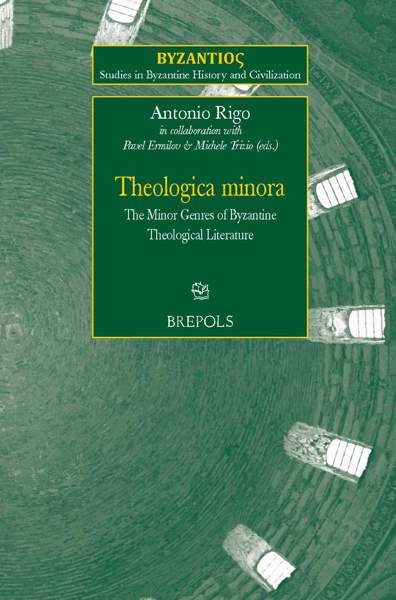
Epirus Revisited. New Perceptions of its History and Material Culture
From the Thematic Session "Epirus Revisited" of the 23rd International Congress of Byzantine Studies, Belgrade, 22-27 August 2016
Christos Stavrakos (ed)
- Pages: 246 p.
- Size:156 x 234 mm
- Illustrations:94 b/w
- Language(s):English
- Publication Year:2020
- € 70,00 EXCL. VAT RETAIL PRICE
- ISBN: 978-2-503-59261-9
- Paperback
- Available
- € 70,00 EXCL. VAT RETAIL PRICE
- ISBN: 978-2-503-59262-6
- E-book
- Available
A presentation of the new results in the research about Epirus
Christos Stavrakos is Professor of Byzantine History in the Department of History and Archaeology at the University of Ioannina. He is a specialist in sigillography but for the last fifteen years has extended his research into Byzantine and post-Byzantine epigraphy and conducted European research projects about the monuments and inscriptions of Epirus in Byzantine and Ottoman times. Christos Stavrakos is currently involved in a collaboration with Dumbarton Oaks (Harvard University) to publish the lead seals with family names from the Collection of Dumbarton Oaks.
The opening of the borders of Albania in the 1990s stimulated an increased interest in its cultural heritage and led to extensive research, as well as archaeological investigations. These, however, have mainly concentrated within Albania's present-day borders and have lacked broader contextualization. Very recent excavations in Greece, which resulted from the construction of the new Ionia Odos highway, have, however brought to light unexpected and interesting material that changes our image of the monumental topography and the settlements in Epirus. New studies concerning Epirus and its broader connections during the early and later Ottoman periods provide a broader impression of the region and its relationships with the large economic centres of the West, as well as with the spiritual-religious and political centres of the Balkans.
Brendan Osswald, The State of Epirus as Political Laboratory
Christos Stavrakos, The Albanian Family of Spata in Late Byzantine and Post-Byzantine Epirus: The Epigraphic Evidence
Katerina Chamilaki, The Excavation of a Late Antique Building Complex, at Drymos, Aetoloakarnania.
Ioannis Chouliaras, Excavation of an Early Byzantine Basilica in Drymos of Vonitsa (Akarnania). Halls "A" and "D".
Björn Forsén and Brikena Shkodra-Rrugia, The Early Christian Landscape of Dyrrachium: The First Miles along the Via Egnatia.
Galina Fingarova, The Church of Saint Mary in Apollonia: An Expression of Byzantine Imperial Claims
Lorenzo Riccardi, Incomplete and Partly Lost: On the Mosaic and Sculptural Decoration of the Paregoretissa Church in Arta.
Katerina Kontopanagou, The Christian Monuments of Epirus in the 17th and 18th c.: Creating the Artistic, Social and Economic Profile
Efstratia Sygkellou, A Tour Around the Abrakian Gulf Through the Eyes of the European Travellers (17th - 19th Century)
Demetrios Georgakopoulos, The Despots of Ioannina and Albanians According to the Author of the Chronicle of Ioannina (1367-1399)




